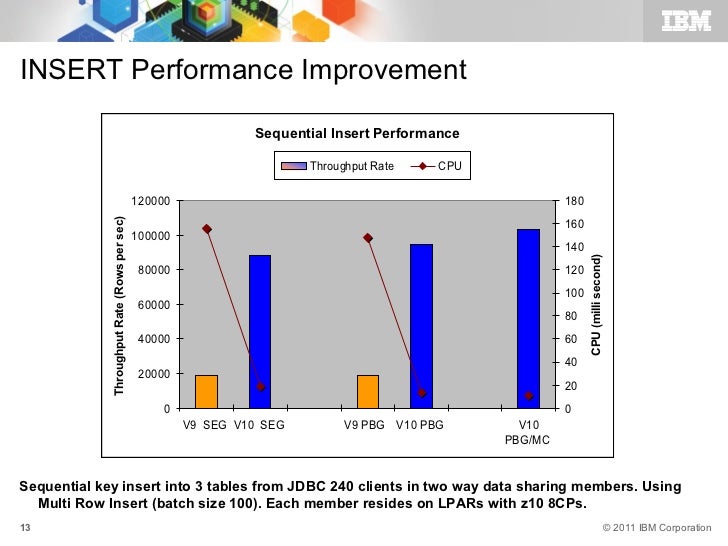Jdbc Batch Insert Generated Keys
Then, you construct an INSERT statement with placeholders and create a new PreparedStatement object by calling the prepareStatement method of the Connection object. You pass the INSERT statement as the first argument and an integer with value Statement.RETURNGENERATEDKEYS as the the second argument to the method. The second argument instructs JDBC to give the inserted ID back. The driver will ignore the array if the SQL statement is not an INSERT statement, or an SQL statement able to return auto-generated keys (the list of such statements is vendor-specific). Under some (uncommon) situations, a single SQL statement may return multiple result sets and/or update counts. Dec 25, 2019 Fix generated keys inside transactions for SQLite3 JDBC-26; Release 0.1.2 on 2012-02-29. Handle prepared statement params correctly JDBC-23; Add support for SQLite3 JDBC-26; Replace replicate (deprecated) with repeat JDBC-27; Ensure MS SQL Server passes tests with both Microsoft and jTDS drivers; Build server now tests derby, hsqldb and sqlite by default. With the IBM® Data Server Driver for JDBC and SQLJ, you can retrieve automatically generated keys (also called auto-generated keys) from a table using JDBC 3.0 methods. An automatically generated key is any value that is generated by the data server, instead of being specified by the user.
-->The Microsoft JDBC Driver for SQL Server supports the optional JDBC 3.0 APIs to retrieve automatically generated row identifiers. The main value of this feature is to provide a way to make IDENTITY values available to an application that is updating a database table without a requiring a query and a second round-trip to the server.
Because SQL Server doesn't support pseudo columns for identifiers, updates that have to use the auto-generated key feature must operate against a table that contains an IDENTITY column. SQL Server allows only a single IDENTITY column per table. The result set that is returned by getGeneratedKeys method of the SQLServerStatement class will have only one column, with the returned column name of GENERATED_KEYS. If generated keys are requested on a table that has no IDENTITY column, the JDBC driver will return a null result set.
As an example, create the following table in the sample database:
In the following example, an open connection to the sample database is passed in to the function, an SQL statement is constructed that will add data to the table, and then the statement is run and the IDENTITY column value is displayed.
See also
- Related Questions & Answers
- Selected Reading
While creating a table, in certain scenarios, we need values to column such as ID, to be generated/incremented automatically. Various databases support this feature in different ways.
In MySQL database you can declare a column auto increment using the following syntax.
Generate a generate your ssh rsa key pair mac. While inserting records in a table there is no need to insert value under the auto-incremented column. These will be generated automatically.
For example, in a table if we have a column with name ID and data type INT, which is auto-incremented and, if we already have 6 records in that table. When you insert the next record using the INSERT statement the ID value of the new record will be 7 and the ID value of its next record will be 8.
(You can specify the initial value and interval for these auto-incremented columns).
Retrieving the auto-incremented values
If you insert records into a table which contains auto-incremented column, using a PreparedStatement object.
You can retrieve the values of that particular column, generated by the current PreparedStatement object using the getGeneratedKeys() method.
Example
Let us create a table with name sales in MySQL database, with one of the columns as auto-incremented, using CREATE statement as shown below −
Now, to insert records into this table using PreparedStatement object and, to retrieve the auto-incremented values generated by it −
- Register the Driver class of the desired database using the registerDriver() method of the DriverManager class or, the forName() method of the class named Class.
- Create a Connection object by passing the URL of the database, user-name and password of a user in the database (in string format) as parameters to the getConnection() method of the DriverManager class.
- Create a PreparedStatement object using the prepareStatement() method of the connection interface.

To this method pass the INSERT statement with bind variables in string format as one parameter and, Statement.RETURN_GENERATED_KEYS as other parameter as −

Jdbc Batch Insert Generated Keys In Excel
- Set values of each record to the bind variables using the setXXX() methods and, add it to batch.
After adding values of all the records to the batch, execute the batch using the executeBatch() method.
- Finally, get the auto-incremented keys generated by this PreparedStatement object using the getGeneratedKeys() method.
Following JDBC program inserts 5 records into the Sales table (created above) using PreparedStatement, retrieves and displays the auto-incremented values generated by it.